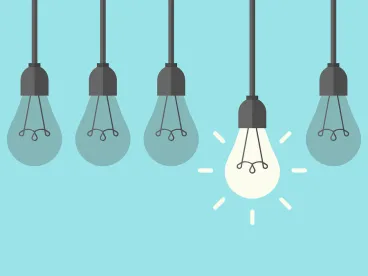A biweekly update on blockchain technology applications, distributed energy resources, and other innovative technologies in the energy sector.
Researchers Use Machine Learning to Identify the Next Generation of Gas Separation Technology
-
Plastic films or membranes are often used to separate simple gases. Scientists have proposed using membrane technology to separate CO2 from other gases for natural gas purification and carbon capture. Because there are potentially tens of thousands of plastics that can be produced to create membranes, however, testing all of them would be cost prohibitive. To date, only approximately 1,000 potential gas separation membranes have been tested.
-
Researchers at Columbia Engineering and the University of South Carolina have developed a machine learning method to identify the most promising materials for gas separation membranes. The process first correlates the chemical structure of the 1,000 previously tested polymers with their gas transport properties. Then the method processes data about more than 10,000 untested polymers to predict which of them would likely perform well as a gas separation membrane. The procedure identified approximately 100 polymers that have not been tested previously for gas transport that are predicted to surpass the current membrane performance limits for CO2/CH4 separations. In fact, two of the most promising polymer membranes identified by the algorithm have exceeded the upper bound for CO2/CH4 separation performance.
-
Identifying the next generation of polymer gas separation membranes may lead to the development of new technologies that could be used to reduce greenhouse gas emissions, develop next generation batteries, and create new water purification systems.
Equinor, Shell, and Total Launch the “Northern Lights Project”
-
On May 15, 2020, Equinor ASA, Royal Dutch Shell PLC, and Total S.A. executed a US$685 million joint venture to develop what will be the world’s first carbon capture storage network, known as the Northern Lights Project. The designed plan involves capturing CO2 emissions generated from two industrial facilities in Norway: a cement plant and cogeneration plant. The CO2 will be transported in liquid form to a transitory onshore storage site before being pumped via subsea pipeline 100 kilometers into a deep saline aquifer on the Norwegian continental shelf in the North Sea. If successful, the companies anticipate applying the joint venture to CO2 generated by other industrial sources from various European countries.
-
They estimate that the project will store 40 million tons of CO2 over the first 25 years (1.5 million tons per year), and an additional 3.5 million tons per year thereafter. The Northern Lights Project is anticipated to serve as a viable and replicable blueprint for other large scale carbon capture projects around the globe, a potentially critical tool to meet the Paris Agreement’s requirements. This technology will also allow certain industries to meet their de-carbonization obligations. The project is projected to become commercially operational at the end of 2023.
Hybrid Wind Energy Project is on the Horizon in the Philippines
-
On May 12, Siemens Gamesa announced the construction of a hybrid wind energy and storage facility in Port Galera, on the island of Mindoro, Philippines. The commercial hybrid project will combine an existing 16 megawatt wind power facility with a 6 megawatt battery storage solution. The facility will employ Siemens Gamesa’s Hybrid Plant Controller system, which allows the company to manage the power generated and stored at the plant and fine tune the wind turbines to optimize the entire plant’s performance. The plant is expected to be commissioned in late 2020 and is currently in negotiations to add an additional 10 megawatt wind farm facility.
-
The project aims to provide stable renewable energy to remote area of the Philippines, and reduce fossil fuel reliance in the region.
Energy Coalition Receives Grant to Model Affordable Renewable Energy Source for a Disadvantaged Los Angeles Community
-
On May 18, 2020, the Energy Coalition announced that the California Energy Commission awarded an Electric Program Investment Charge Program (“EPIC”) grant worth more than US$9 million to a consortium of energy groups and researchers to provide a model of affordable, reliable, renewable energy for a disadvantaged community of Los Angeles, known as the Basset-Avocado Advanced Energy Community (“BAAEC”). The consortium includes the Energy Coalition, Community Electricity, Day One, and University of California-Los Angeles Institute of the Environment & Sustainability, among others. Over two implementation phases, the total investment for the BAAEC from the EPIC grant and matching partnerships will be nearly US$20 million dollars.
-
The model involves seven components, including a digital application; a community solar and storage system; a microgrid that cleans emergency back-up power; a virtual power plant powered by a prosumer network of 50 homes with solar photovoltaic and battery storage; a blockchain network; a mobile grid of electric vehicles charging stations; pollution sensors and a NOx emission monitoring system; and a mobile laboratory measuring the real-time decarbonization impact. Community Electric expects that the data-driven, decarbonization protocols will improve the quality of life and provide economic benefits to the 28,000 residents of the BAAEC.





 />i
/>i

